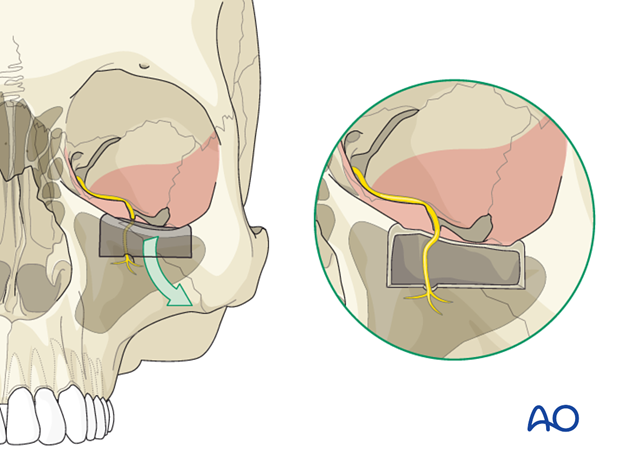Adjunctive access procedures (orbitotomies)
1. Exposure of lateral Orbital Wall via Temporal/Infratemporal Fossa Approach
Cases of severe fragmentation/displacement of the zygomaticosphenoid junction involving the greater sphenoid wing result in the loss of this landmark of the skull base. Restoration of the posterior lateral orbit and the transition into the orbital apex can then be performed via a temporal/infratemporal fossa approach.
The zygoma is exposed through a coronal approach.
The temporalis muscle is incised below the superior temporal line and vertically at a preauricular level and reflected down to expose the lateral orbital wall all the way to the pterion.
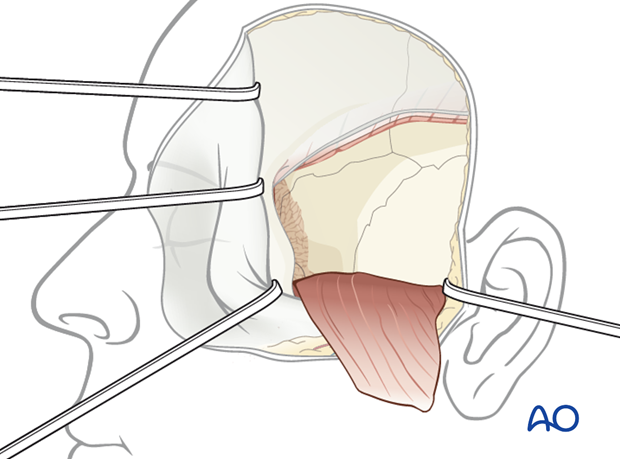
Clinical case demonstrating the exposure of the lateral orbital wall via a temporal/infratemporal approach.
The temporalis muscle is elevated below superior temporal line and retracted to expose the lateral orbital wall.
In this case a preauricular was not necessary to provide adequate exposure.
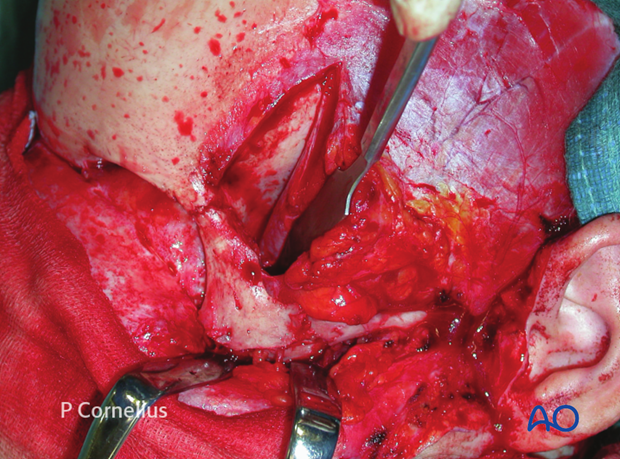
2. Lateral Marginotomy
Lateral, superior and inferior marginotomies facilitate exposure of the posterior orbit.
Temporary removal of the lateral orbital rim and the adjacent orbital wall is rarely required for the reduction and fixation of orbital fractures but may be a useful maneuver to decompress a retrobulbar hemorrhage with compartmentalization inside the periorbital sac.
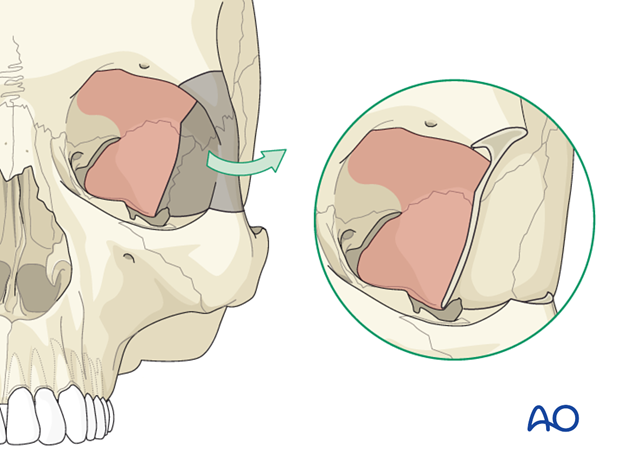
The CT scan stems from such case with an orbital floor fracture, where the loss of vision was fully reversible subsequent to the osteotomy and outfracture of the lateral wall.
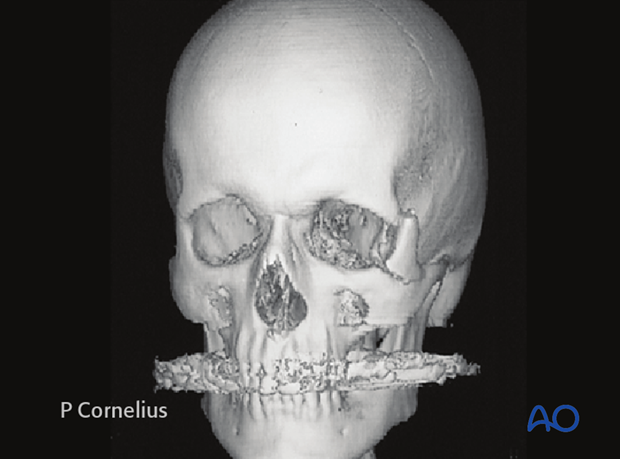
3. Superomedial Marginotomy
A superior marginotomy takes out the superomedial orbital ring which includes the anterior wall of the frontal sinus. The lateral cut goes beyond the midpoint of the roof encompassing the lateral recess of the frontal sinus.
This provides a subcranial access to orbital apex, the frontoethmoidal transition, and the entire medial wall.
In particular the instrumentation along the medial wall is greatly facilitated through this subcranial extension, since it overreaches the post rim bony concavity and permits entry at the widest bony cross section of the orbit.
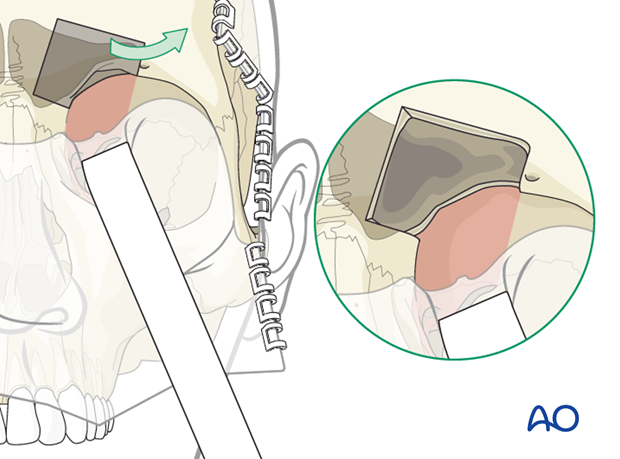
4. Inferior Marginotomy
The inferior marginal osteotomy is mostly advocated in secondary repair of the orbital floor, because it provides a wide and simultaneous access to the maxillary sinus and the lower circumference in the mid and posterior orbital floor. This facilitates dissection and elevation of scarred orbital soft-tissue herniations from the maxillary sinus.
Moreover the infraorbital nerve can be explored, for instance to perform an external neurolysis.
